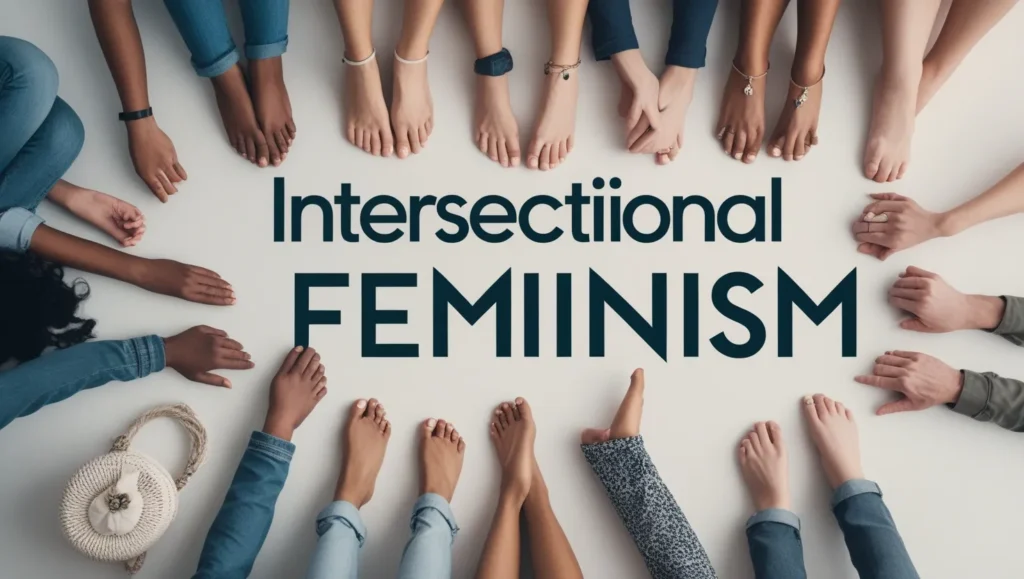Understanding Intersectional Feminism
Feminism, in its essence, is the advocacy for gender equality, striving for a world where everyone—regardless of gender, race, class, sexual orientation, or other Understanding Intersectional Feminism factors—has equal rights and opportunities. While the core goal of feminism remains consistent, the ways in which individuals and communities experience gender inequality are incredibly varied. This is where the concept of intersectional feminism comes into play.
Intersectional feminism acknowledges that people don’t experience oppression in a single, linear way. Instead, it emphasizes the overlapping and interconnected nature of various forms of oppression—based on race, gender, class, sexual identity, disability, and more—and how these intersect to create unique experiences for individuals. The term was coined by Kimberlé Crenshaw, a law professor and civil rights advocate, in 1989 to describe how race and gender discrimination often intersect in complex ways, especially for Black women.
In this blog, we’ll explore what intersectional feminism is, its importance, and how it can lead to a more inclusive and holistic understanding of gender equality.
What is Intersectional Feminism?
At its core, intersectionality refers to the ways in which different aspects of a Understanding Intersectional Feminism person’s social identity—such as race, gender, sexuality, class, age, ability, religion, and more—interact and overlap, leading to different experiences of discrimination and privilege. The term was first introduced by Crenshaw in a paper examining the struggles of Black women in the context of both racism and sexism, which often cannot be understood in isolation from one another. For example, Black women may face discrimination that is different from the racism Black men experience or the sexism that White women face.
Intersectional feminism, therefore, seeks to understand how these multiple dimensions of identity intersect, forming unique, multifaceted systems of oppression and privilege. This means that feminism should not only focus on the issues faced by White, middle-class, cisgender women but should also include the voices and struggles of those who are marginalized by race, class, sexuality, ability, and other intersecting identities.
The Origins of Intersectionality
Crenshaw’s foundational work on intersectionality arose from the experiences of Black women, whose struggles were often overlooked within both the feminist movement and civil rights activism. She pointed out that traditional feminism was largely shaped by the experiences of White, middle-class women, and thus failed to address the needs of women of color. Similarly, civil rights movements, which focused on race, often disregarded the gendered dimensions of oppression faced by Black women.
Crenshaw’s insights have since been expanded to encompass a broader range of social identities and forms of discrimination. Intersectional feminism stresses the importance of a nuanced, holistic understanding of how oppression works. It rejects the idea that oppression is experienced in isolated, separate categories and acknowledges that these systems are interconnected and cannot be fully understood or addressed individually.
The Key Principles of Intersectional Feminism
Intersectional feminism is built on several key principles:
- Multiple Identities: People have multiple, often overlapping, social identities that influence their experiences. Gender is just one aspect of a person’s Understanding Intersectional Feminism identity, and to understand oppression, one must consider how race, class, sexuality, and other factors play a role.
- Systems of Oppression: Rather than focusing on a single form of oppression, intersectional feminism recognizes that systems of oppression—such as racism, sexism, homophobia, ableism, and classism—are interconnected. These systems reinforce and amplify each other.
- Unique Experiences: Different individuals experience oppression differently based on the intersections of their identities. For instance, the struggles faced by a Black woman are different from those faced by a White woman or a Black man, and this must be recognized in feminist activism.
- Inclusion and Representation: Intersectional feminism seeks to include and uplift the voices of those who have been marginalized within traditional feminist movements. This includes women of color, queer and transgender people, people with disabilities, and those from lower socio-economic backgrounds.
- Social Justice and Equality: At its heart, intersectional feminism is a social justice movement that seeks to dismantle all systems of oppression, not just those related to gender inequality. It calls for the empowerment of all marginalized groups.
Why is Intersectional Feminism Important?
1. Addressing Inequality More Effectively: Intersectional feminism helps create a more nuanced understanding of social inequality. It’s not enough to simply focus on gender when discussing issues like poverty, violence, or discrimination. By Understanding Intersectional Feminism considering multiple factors—such as race, class, and disability—feminists can develop solutions that address the root causes of oppression more effectively.
For example, a woman’s experience of violence might differ drastically depending on whether she is a Black woman, a transgender woman, or a cisgender White woman. Intersectional feminism emphasizes that different experiences require different approaches to solutions, such as healthcare, legal protection, or support systems.
2. Challenging Exclusivity: Traditional feminist movements have often been criticized for being exclusive and centered around the needs of White, middle-class, heterosexual women. Intersectional feminism challenges this by ensuring that marginalized voices are heard and included. This diversity of perspectives is crucial for creating an inclusive feminist movement that truly represents all women and gender minorities.
3. Building Solidarity Across Movements: Intersectionality fosters solidarity Understanding Intersectional Feminism between different social justice movements. By recognizing that the struggles of women, people of color, LGBTQIA+ individuals, and others are interconnected, intersectional feminism encourages cooperation and mutual support among these diverse groups. This is crucial for creating a stronger, unified front in the fight for social justice.
Real-World Applications of Intersectional Feminism
Intersectional feminism is not just a theoretical framework; it has real-world implications. Several movements, both historical and contemporary, have applied intersectional principles to better advocate for marginalized groups:
- Black Feminism: Leaders like Audre Lorde, bell hooks, and Angela Davis have long emphasized the importance of intersectionality in their work. They argue that Black women’s experiences are shaped by both racism and sexism, and therefore, any liberation movement must address both.
- Transgender and Non-Binary Advocacy: Transgender people often Understanding Intersectional Feminism experience unique forms of discrimination based on both their gender identity and other aspects of their identity, such as race and class. Intersectional feminism highlights the importance of addressing the needs of transgender people, particularly transgender women of color, who face the highest rates of violence.
- Disability Rights: Disability justice, a movement that emerged from Understanding Intersectional Feminism intersectional feminism, emphasizes the interconnectedness of disability with other forms of oppression, such as race, gender, and class. It recognizes that disabled people, particularly disabled women and people of color, face compounded discrimination and need more tailored advocacy.
Final Thoughts
As our world becomes more diverse and interconnected, intersectional feminism Understanding Intersectional Feminismoffers a powerful framework for understanding and addressing the complexities of inequality. It reminds us that we must not view oppression as isolated or singular but as a multifaceted problem that requires comprehensive solutions. By embracing intersectionality, feminists can create a more inclusive, just society where all individuals, regardless of their identities, can thrive.
Intersectional feminism is about amplifying the voices of those who have been historically marginalized and creating a movement that is truly for everyone. It’s an ongoing journey of learning, listening, and advocating for social justice that recognizes and values the richness of human diversity.

